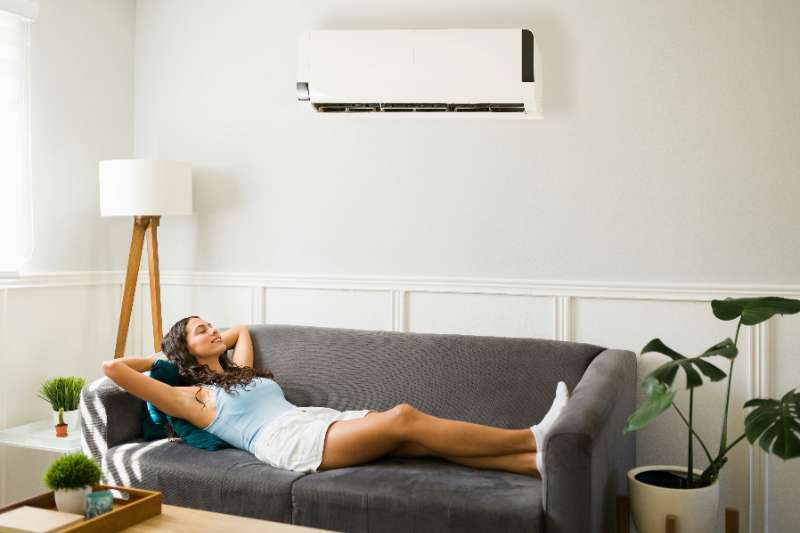Your air conditioner is one of the hardest-working appliances in your home, especially during the hot months. But like any machine, it needs proper care to function efficiently. Neglecting maintenance can lead to higher energy bills, poor cooling performance, and costly repairs.
The good news? Keeping your AC in top shape doesn’t require expert-level knowledge—just a few simple habits and precautions. In this guide, we’ll break down the essential do’s and don’ts of AC maintenance so you can enjoy an incredible, comfortable home all year round.
Do’s – Best Practices for a Well-Functioning AC
If you want to extend the life of your AC and keep it running smoothly, here are some key maintenance practices you should follow:
✔ Regularly Change or Clean the Filters
Your AC filter keeps dust, dirt, and allergens out of the air. A clogged filter restricts airflow, making your unit work harder and increasing energy consumption. Ideally, you should clean or replace your filter every 1–3 months, depending on usage and indoor air quality.
✔ Schedule Professional Maintenance
Even if your AC is working fine, an annual tune-up by a professional can help catch minor issues before they become big problems. A technician will check refrigerant levels, inspect electrical components, and ensure everything runs efficiently.
✔ Keep the Outdoor Unit Clean
If your AC has an outdoor condenser unit, ensure it’s free from leaves, dirt, and debris. A blocked condenser can cause overheating and reduce efficiency. Regularly clear the area around the unit and hose it down gently to remove buildup.
✔ Use a Programmable Thermostat
Setting your thermostat to adjust temperatures automatically when you’re not home can save energy and reduce strain on your AC. Smart thermostats can even learn your cooling habits and optimize settings for efficiency.
✔ Ensure Proper Ventilation
Your AC needs good airflow to function correctly. Ensure that furniture, curtains, or other objects don't block vents and registers. Proper air circulation helps maintain consistent cooling and prevents the system from overworking.
Don’ts – Mistakes That Can Damage Your Sydney Air Conditioning
Avoiding bad habits is just as important as following good maintenance practices. Here are some common mistakes that can harm your AC:
✘ Overworking Your AC
Running your AC at the lowest possible temperature for extended periods can strain the system unnecessarily. Instead, set it to a comfortable temperature (around 24–26°C) to balance cooling and energy efficiency.
✘ Ignoring Strange Noises or Odors
Unusual sounds like rattling, buzzing, or grinding could indicate loose or damaged components. Musty odors might signal mold buildup. Ignoring these warning signs can lead to more significant, more expensive problems.
✘ Skipping Maintenance Checks
It’s easy to forget about your AC when running fine, but skipping routine inspections can lead to unnoticed wear and tear. Regular servicing helps identify issues early and ensures your system stays efficient.
✘ Blocking Air Vents
Placing furniture, rugs, or curtains over vents can disrupt airflow and cause uneven cooling. Blocked vents force your AC to work harder, increasing wear and tear on the system.
✘ Delaying Repairs in Air Conditioning Systems
If your AC isn’t cooling correctly, has weak airflow, or keeps turning on and off, don’t wait too long to address the problem. Minor issues can quickly become significant breakdowns, leaving you with expensive repairs or a complete replacement.
Simple Habits to Keep Your AC Running Efficiently
Taking care of your AC doesn’t have to be complicated. By incorporating a few simple habits into your routine, you can improve efficiency, reduce energy costs, and extend the lifespan of your unit.
Adjust Thermostat Settings Wisely
Setting your thermostat to a reasonable temperature can significantly affect energy usage. Instead of cranking it down to the lowest setting, keep it comfortable, such as 24–26°C. This prevents excessive strain on the system while still keeping your home cool.
Use Ceiling Fans to Distribute Cool Air
Ceiling fans don’t lower the temperature, but help circulate cool air more effectively. Using fans alongside your AC allows you to raise the thermostat a few degrees without sacrificing comfort, ultimately reducing energy consumption.
Keep Windows and Doors Properly Sealed
Leaky windows and doors allow warm air to creep in and cool air to escape, forcing your AC to work harder. Check for drafts and use weather stripping or caulking to seal gaps, improving overall efficiency.
Turn Off the AC When Not Needed
Leaving the AC running when you’re not home wastes energy and adds unnecessary wear and tear to the system. If you’re stepping out for several hours, consider turning it off or raising the thermostat to conserve power.
Conclusion
Taking care of your AC doesn’t have to be complicated or expensive. By following the do’s and avoiding the don’ts, you can keep your system running smoothly for years to come. Simple habits like cleaning filters, scheduling maintenance, and using fans for better airflow improve efficiency and prevent costly repairs.
A well-maintained AC not only cools your home effectively but also helps lower energy bills and reduces the chances of unexpected breakdowns. With just a little effort, you can enjoy a comfortable and hassle-free cooling experience all year round.



































